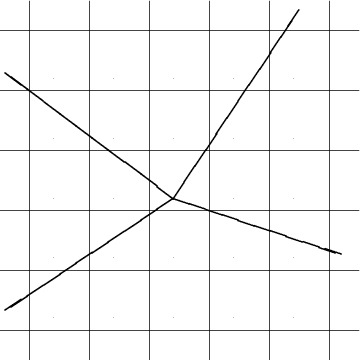
Previous: 11.1 Introduction Up: 11. Smoothing Monte Carlo Simulation Results Next: 11.3 A Three-Dimensional Example
 |
![\includegraphics[width=0.75\linewidth]{figures/cmos_gate_struct}](img293.png)
|
![\includegraphics[width=0.75\linewidth]{figures/cmos_gate_struct_cut}](img294.png)
|
The algorithm works by constructing approximating multivariate
Bernstein polynomials in the neighborhood of the points of the
unstructured, new grid. Let ![]() be the initial isotropic homogeneous
grid, where values are associated with the volume cells, as is usually
the case in Monte Carlo simulations of ion implantations, and
be the initial isotropic homogeneous
grid, where values are associated with the volume cells, as is usually
the case in Monte Carlo simulations of ion implantations, and ![]() the
anisotropic inhomogeneous grid, which is to be used in following
simulations, where values are associated with the grid points.
the
anisotropic inhomogeneous grid, which is to be used in following
simulations, where values are associated with the grid points.
For each point of grid ![]() ,
, ![]() neighboring points are used for
constructing an approximation value for the point considered (cf.
Figure 11.1), where
neighboring points are used for
constructing an approximation value for the point considered (cf.
Figure 11.1), where ![]() ,
, ![]() odd, and
odd, and ![]() is the
dimension.
is the
dimension. ![]() was chosen in the example below and provides good
smoothing results. At the boundary the values of grid
was chosen in the example below and provides good
smoothing results. At the boundary the values of grid ![]() are
extended constantly. Thus
are
extended constantly. Thus ![]() points are used for constructing a
multivariate Bernstein polynomial which is evaluated at the point in
the middle in question. Note that it is not necessary to calculate
the polynomial explicitly, since each polynomial is later evaluated at
one point only. Additionally, it is not necessary to use an affine
transformation by assuming that the convex hull of the neighboring
points is
points are used for constructing a
multivariate Bernstein polynomial which is evaluated at the point in
the middle in question. Note that it is not necessary to calculate
the polynomial explicitly, since each polynomial is later evaluated at
one point only. Additionally, it is not necessary to use an affine
transformation by assuming that the convex hull of the neighboring
points is ![]() and the middle point has coordinates
and the middle point has coordinates
![]() .
.
Thus for three dimensions and setting ![]() , the values of the
points of grid
, the values of the
points of grid ![]() are
are
One of the benefits of this algorithm is that it can be implemented in
a straightforward manner in languages like C and Fortran using the
expression for
![]() given
above. In order to minimize computation time, the values of the
binomial coefficients can be pre-calculated and stored in arrays.
given
above. In order to minimize computation time, the values of the
binomial coefficients can be pre-calculated and stored in arrays.
Furthermore, it is fast so that it can be used for grids containing hundreds of thousands of points. Due to the theorems given in Chapter 7, its smoothing and approximating properties are outstanding. Thus it is faster, easier to implement, and approximates and smoothes better than the RSM approach of fitting polynomials of fixed degree.
Clemens Heitzinger 2003-05-08